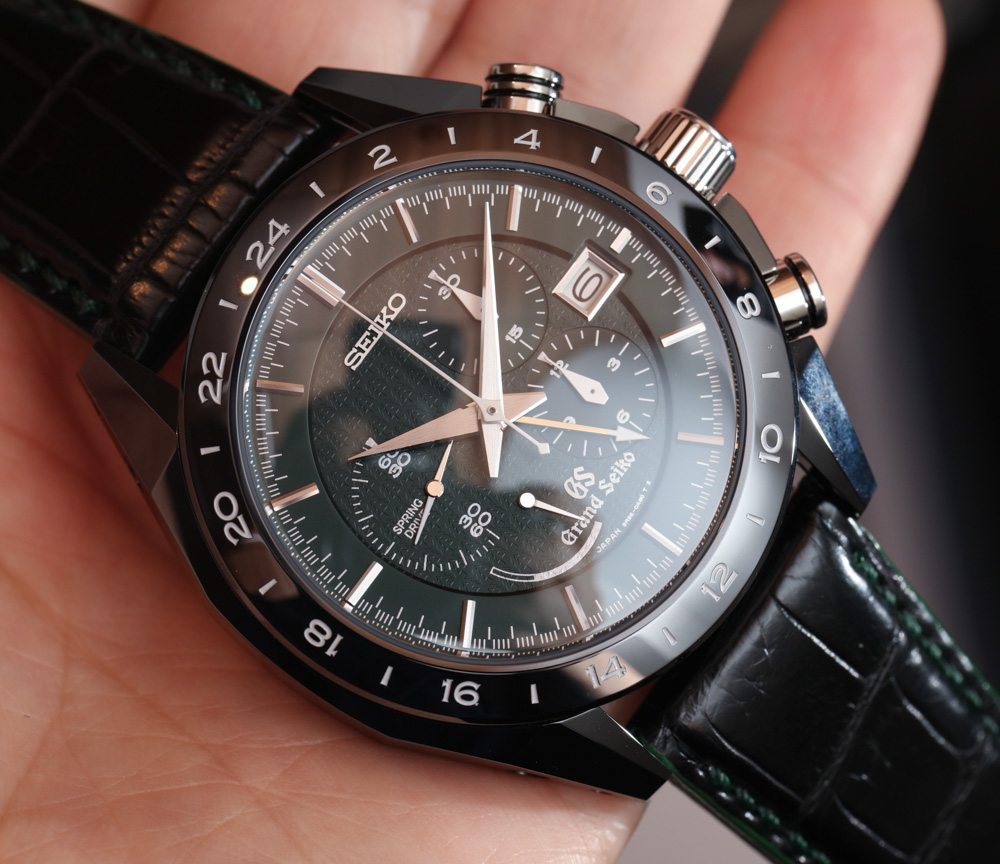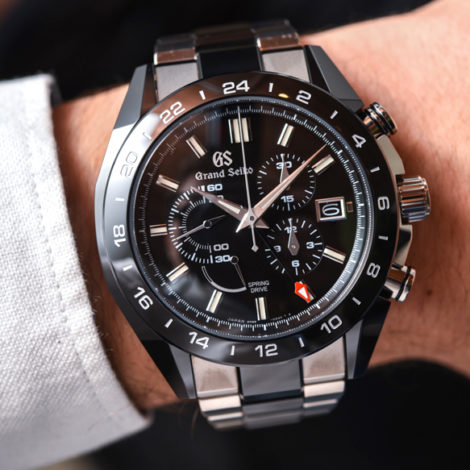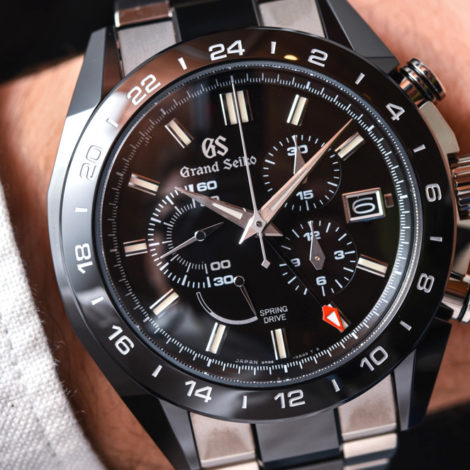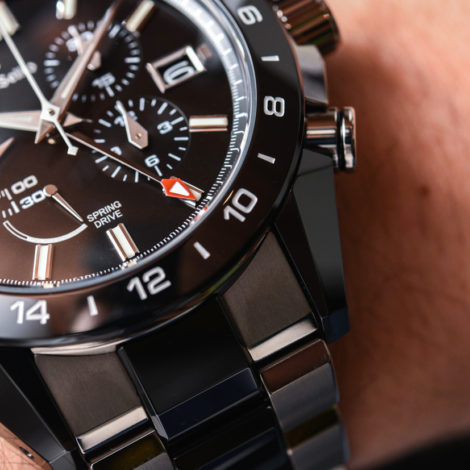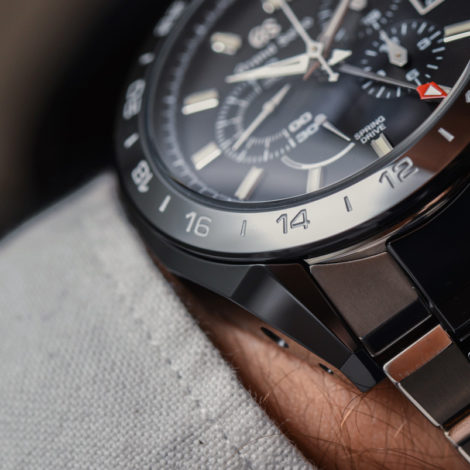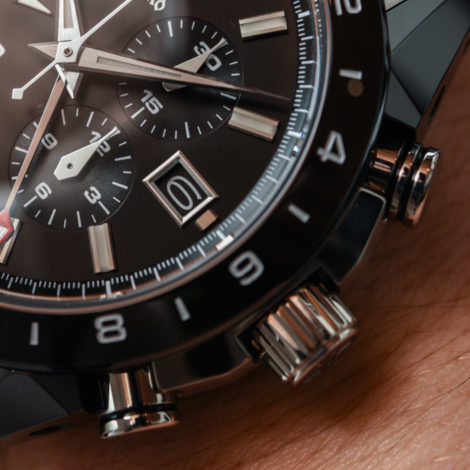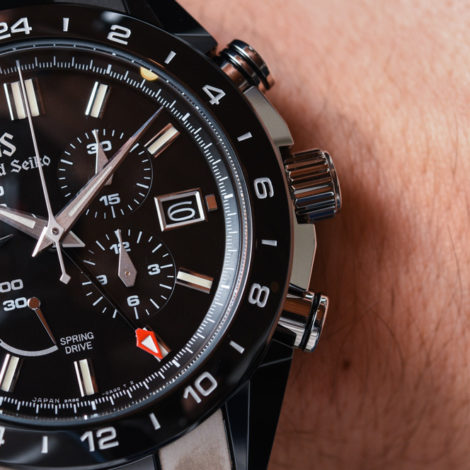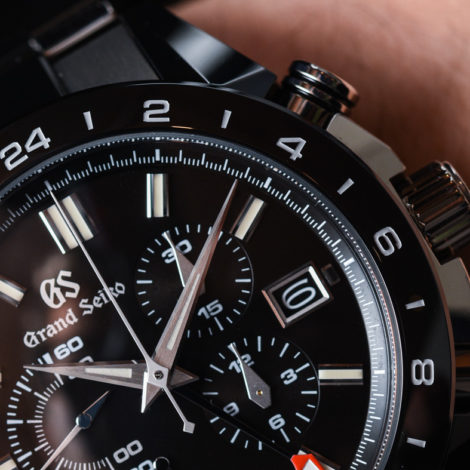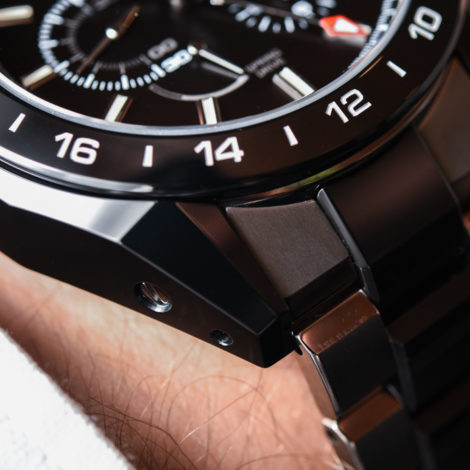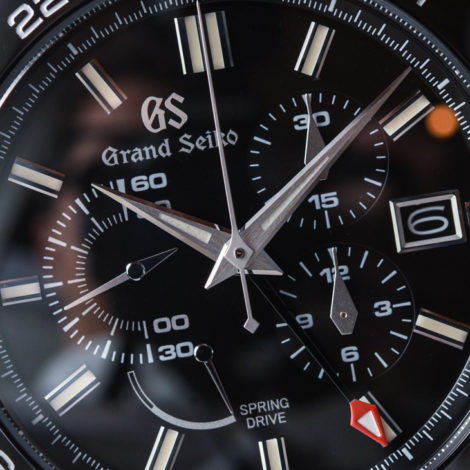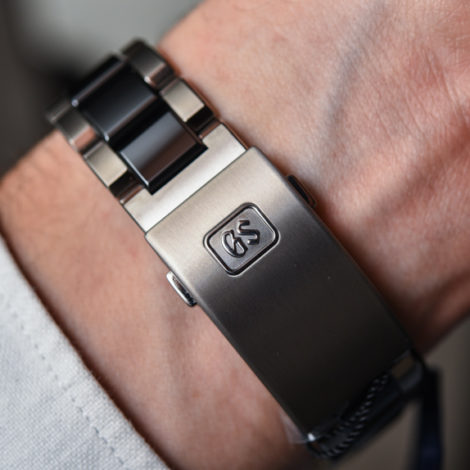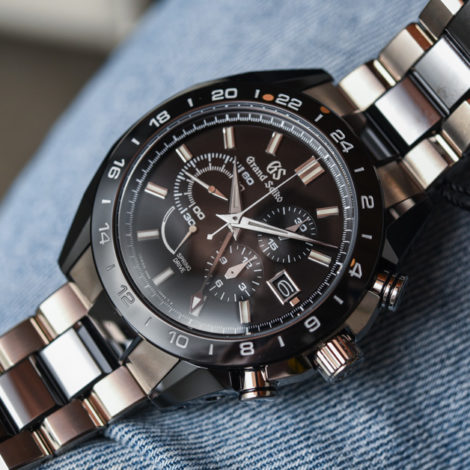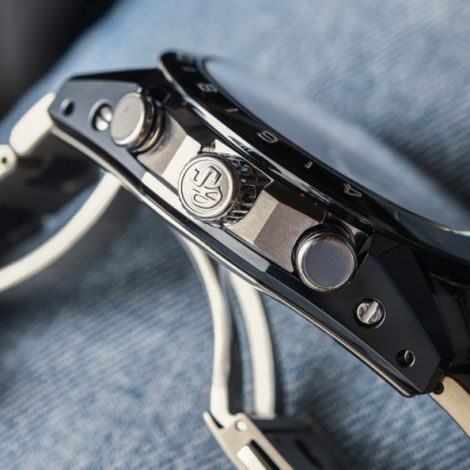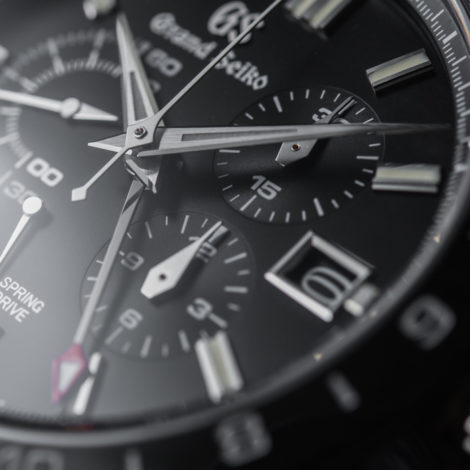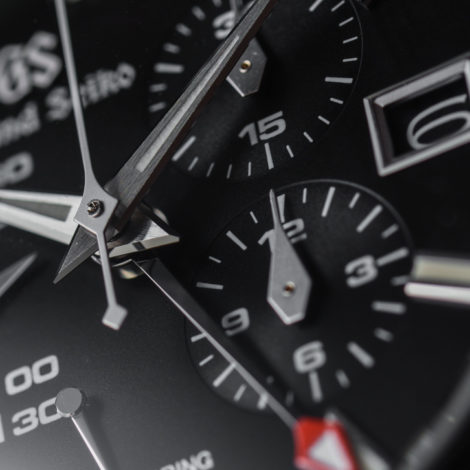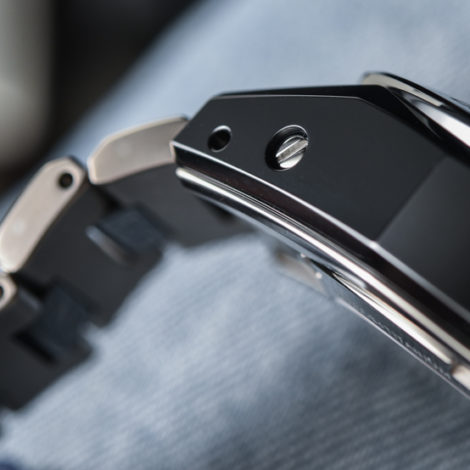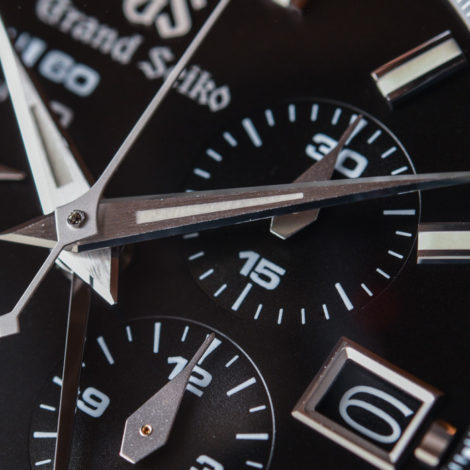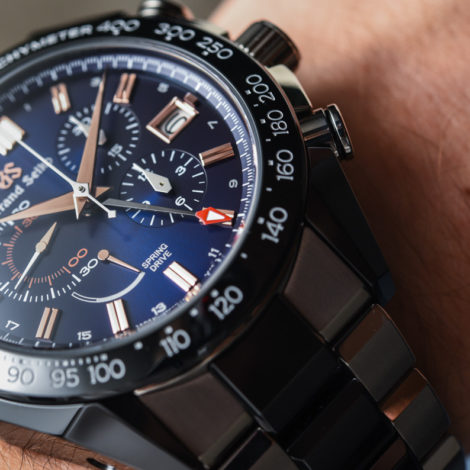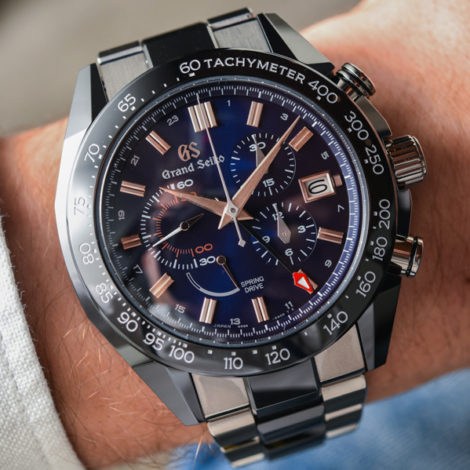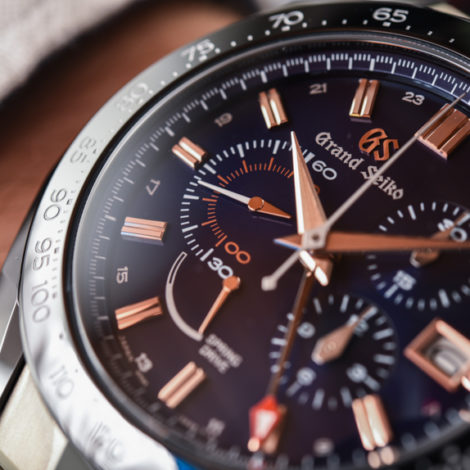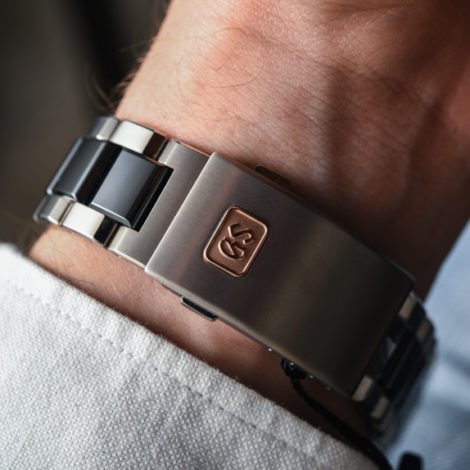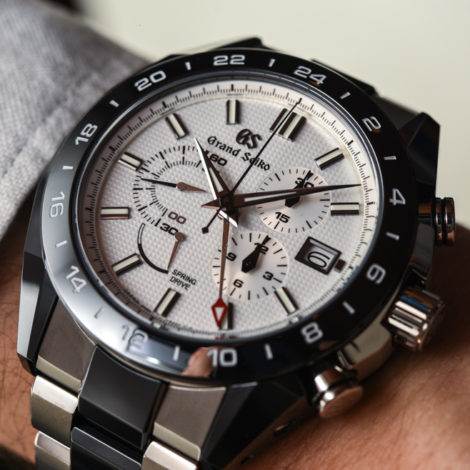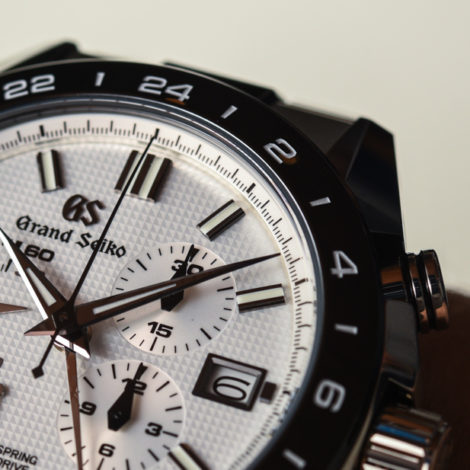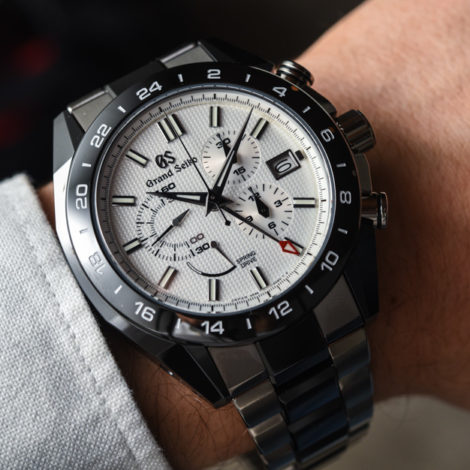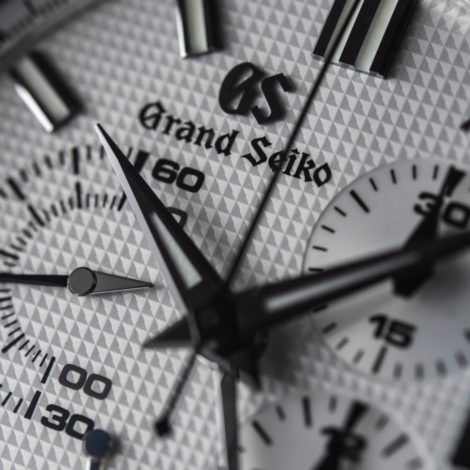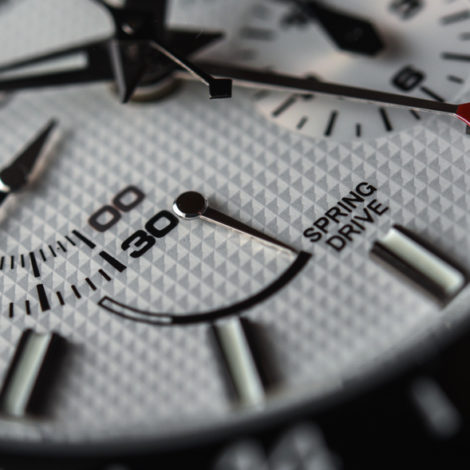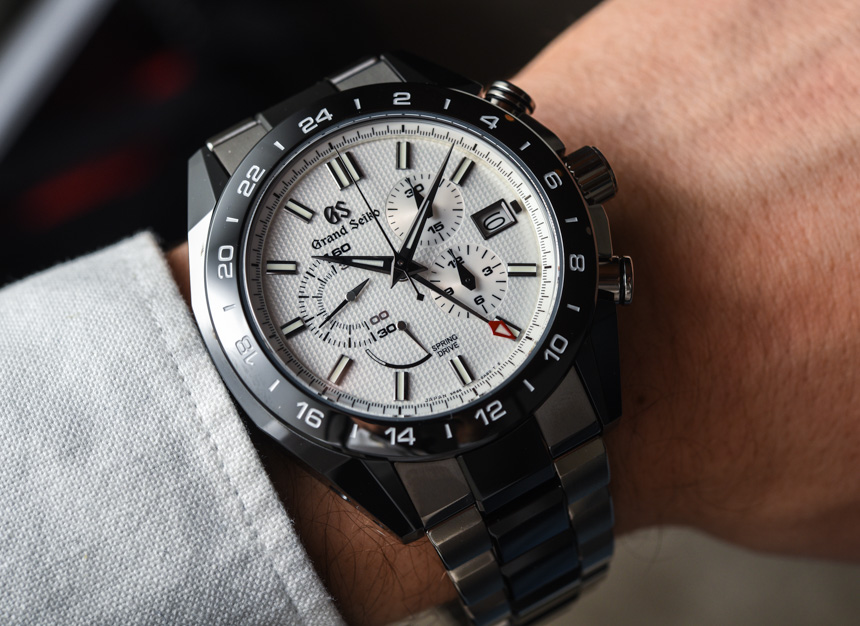
It’s no secret that watch enthusiasts tend to have a love for Grand Seiko that I’ve always likened to that of an indie music snob’s fondness of an obscure band that’s loved by their peers but relatively unknown to the masses (any old Broken Social Scene fans out there?). Grand Seiko watches are exceptionally made and the epitome of “stealth wealth” in a lot of ways. Now, things are changing with Seiko putting an increasing importance on their luxury watches as part of their broader strategy in a changing market, meaning Grand Seiko has got to go mainstream outside of Japan. Seiko (smartly) decided this year that “Seiko Grand Seiko” would now just be the autonomous “Grand Seiko,” and one of the releases in tandem with the rebranding was the new Grand Seiko Black Ceramic Spring Drive Chronograph GMT SBGC219, SBGC221, and SBGC223 watch collection.
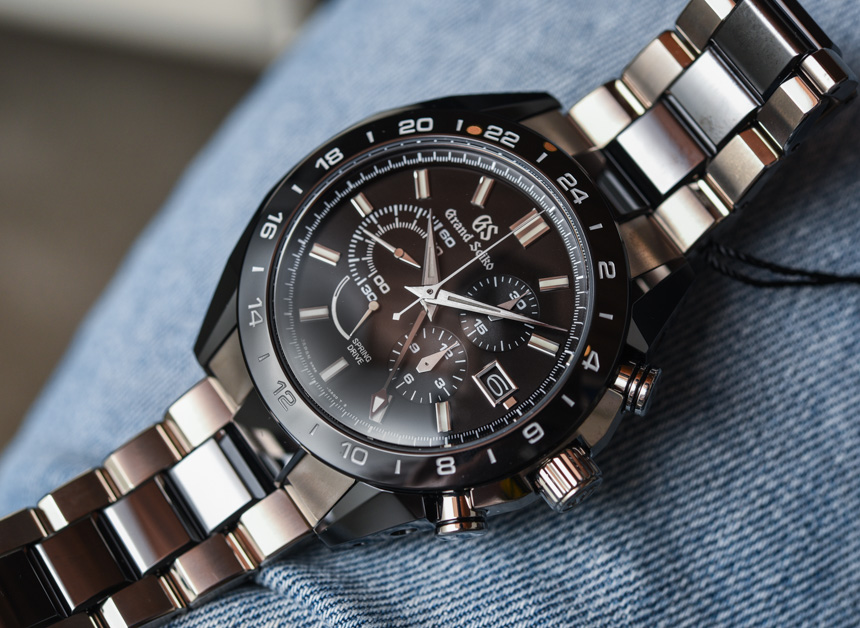
You’ll remember that in 2016, we saw the Grand Seiko Black Ceramic Limited Edition Chronograph SBGC017 watch (seen above) which featured the serene and lovely green repeating tree pattern dial that came on a leather strap. This watch was part of a series of four limited edition ceramic watches which were the first ceramic cases from Seiko and came with some sticker shock, priced at $13,000. Well, now we know that this was Grand Seiko proverbially dipping their toes in the water, as these new ceramic sports watches have light and durable ceramic-titanium bracelets, the new Grand Seiko branding, and price tags of $14,800 for the non-limited SBGC221 and SBGC223 and $15,800 for the limited edition of 500 SBGC219.
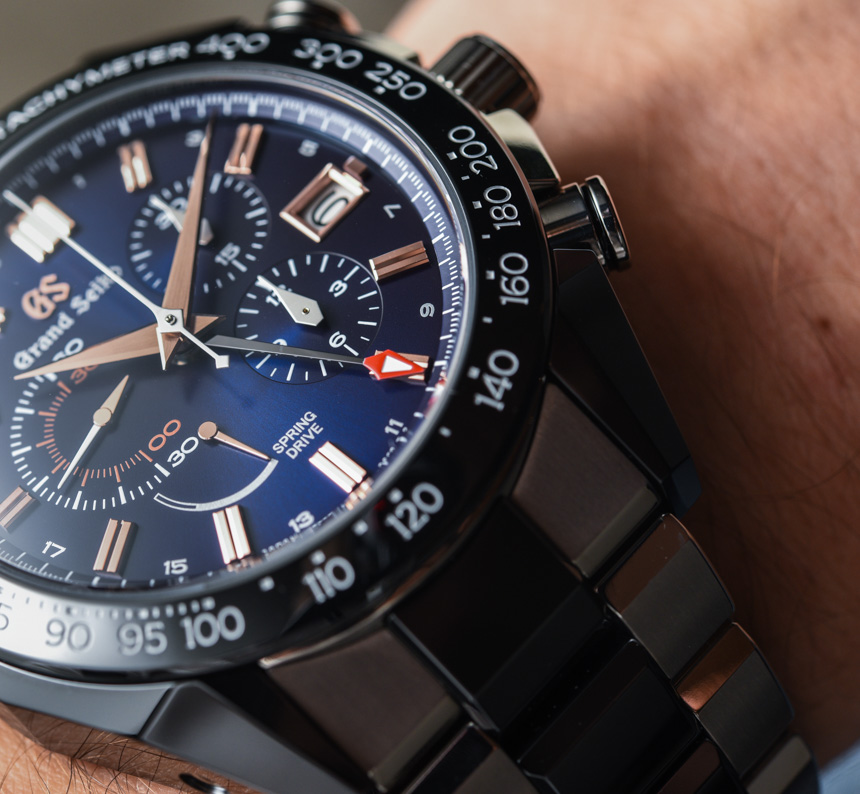
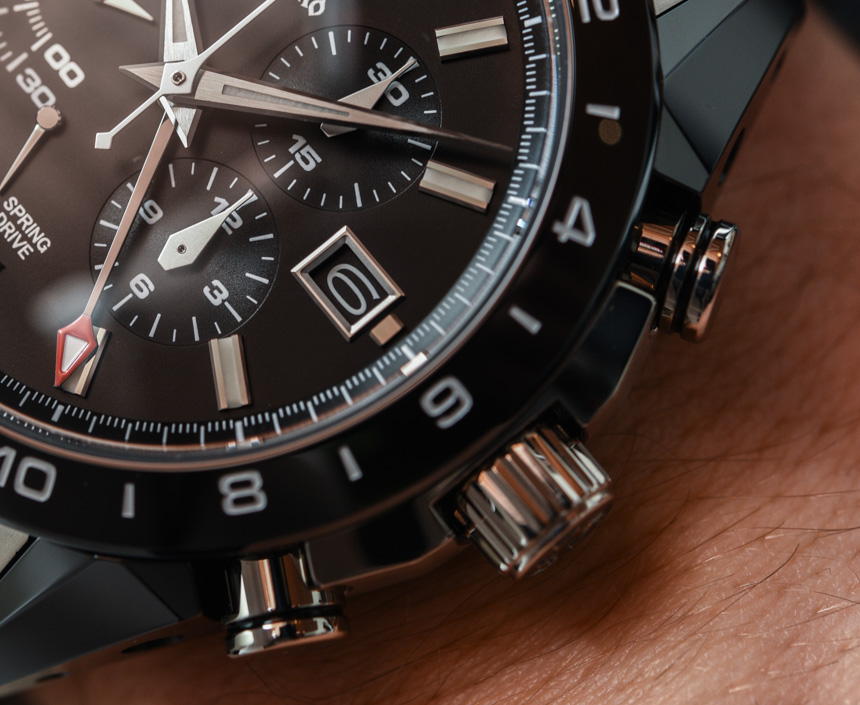
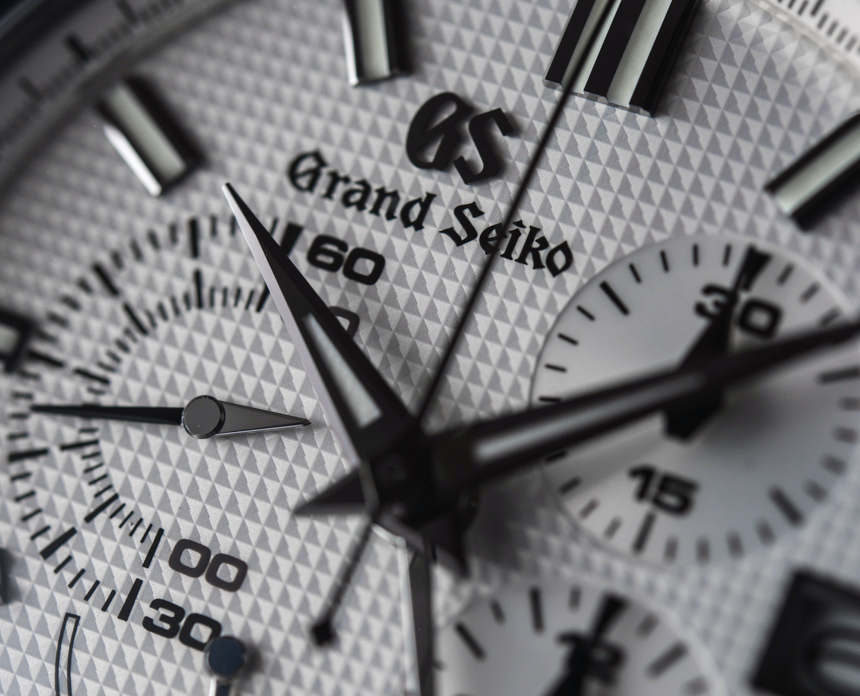
I want to now take a moment to address that Grand Seiko makes some of the best watches today, and their Spring Drive movement is without hyperbole one of the finest mass-production movements out there. Since this hands-on piece can’t possibly contain the details of these statements, I’m going to refer the uninitiated to two articles written by our own David Bredan. The first is his in-depth explanation and history of the Spring Drive movement and the second is his review of his #TheGrailSeiko, the Grand Seiko Spring Drive Chronograph SBGC001. Done in steel, the SBGC001 is priced at $7,700 but we are now talking about a 2.5X cost premium with the ceramic body and new titanium-ceramic bracelet.
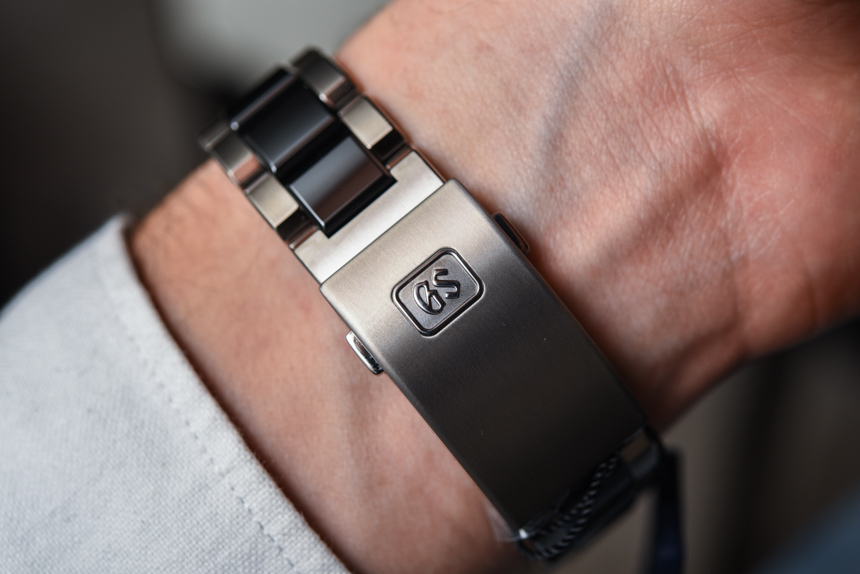
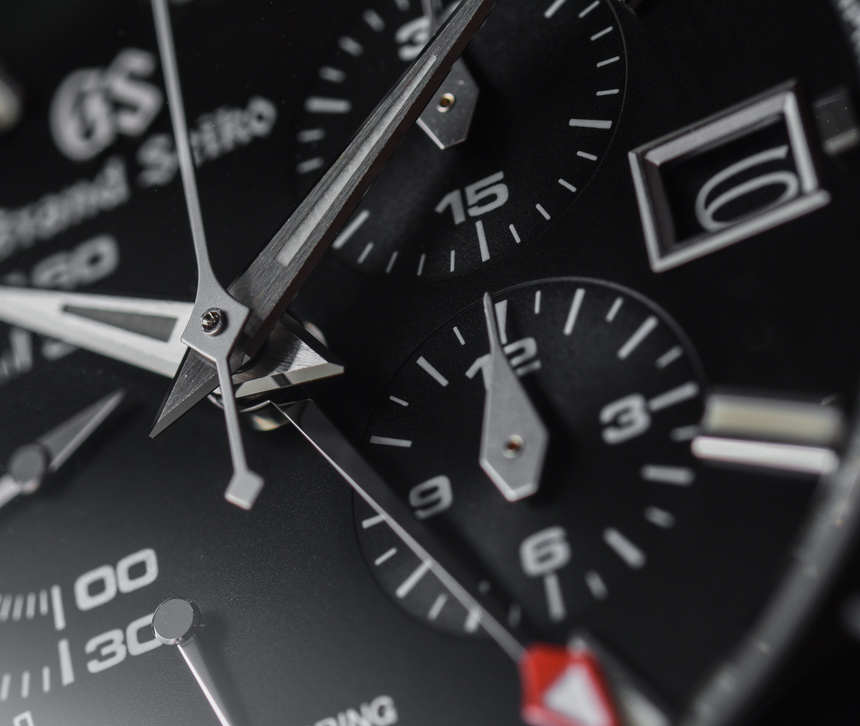
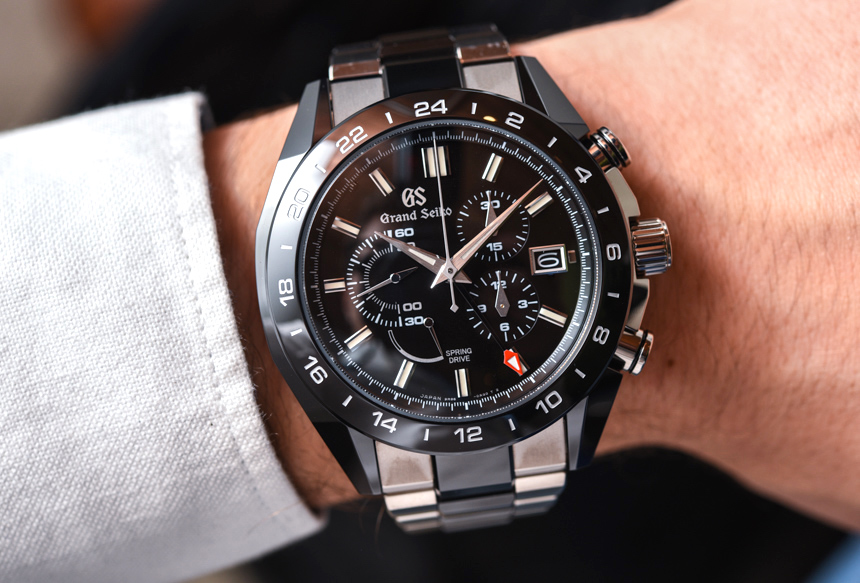
All three of these new watches have a 46.4mm wide (a clear sign this is a watch marketed to Western markets) and 16.2mm thick case with the bezel, lugs, and center links on the bracelet done in Zirconia ceramic, a particularly strong and scratch resistant ceramic. The rest of the dial and bracelet are done in titanium, and you’ll notice the ceramic parts are raised on the bracelet in order to protect the titanium from scratching. The logic here being that if the ceramic can take the lion’s share of wear and tear, the scratches won’t show. The dial layout is unchanged from previous Spring Drive GMT watches, with the chronograph sub-dials on the right side of the dial, seconds sub-dial at 9 o’clock, and power reserve indicator right below. Of course, at 11 o’clock is the only branding you’ll see on the dial, with the Grand Seiko name and GS insignia.
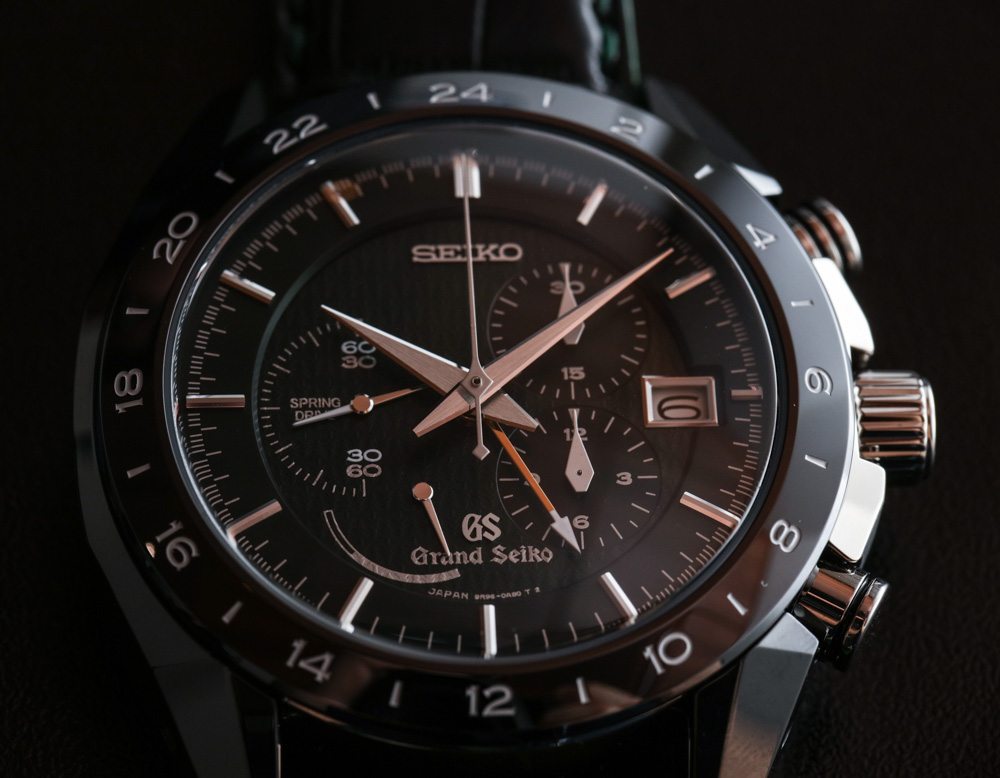
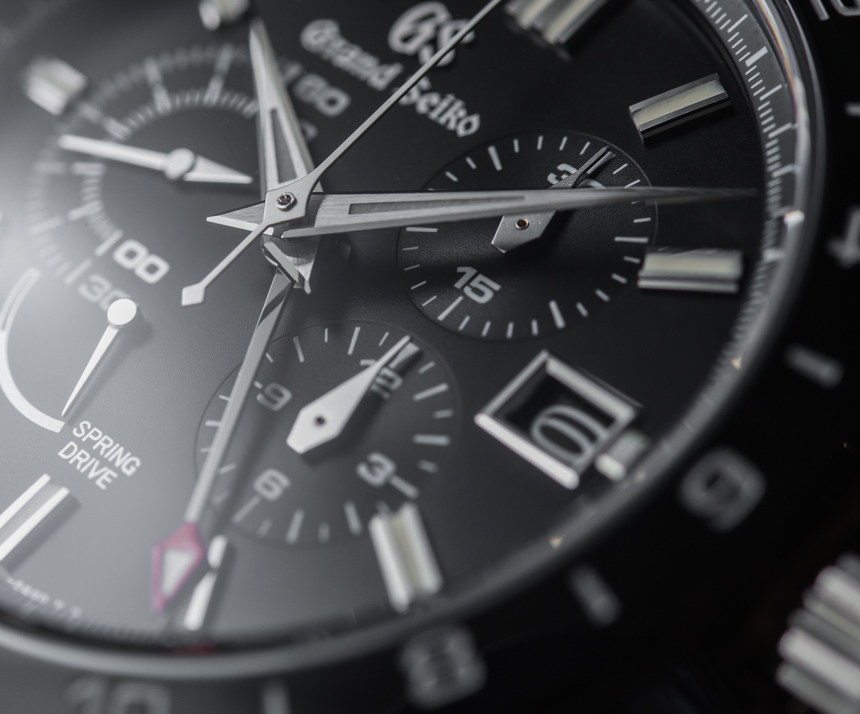
The hands are all done as one would expect from Grand Seiko and I’m really glad to see that the minute hand and GMT hand are extended in length when compared to last year’s initial Black Ceramic watch. I’m also glad to see that lume was added to the hour, minute, and GMT hands as well as the hour markers (though the limited edition model has non-lumed red gold hour and minute hands). Above you can compare last year’s dial with the new Black Ceramic dial.
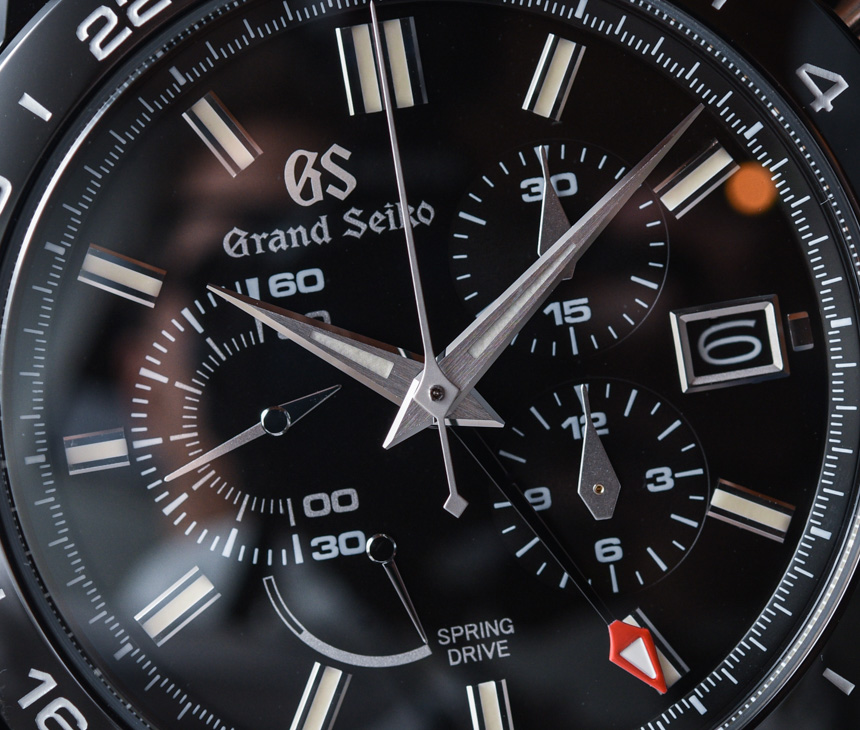
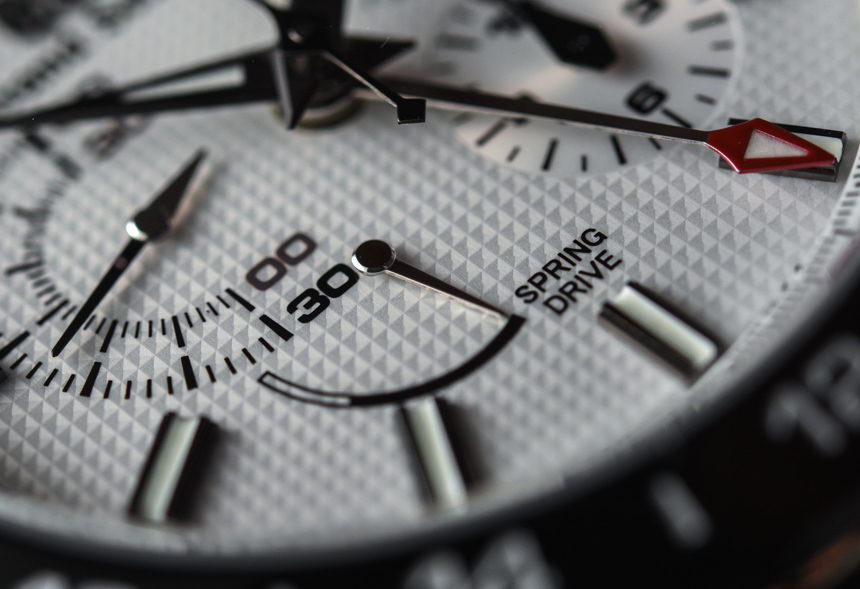
On that note, I actually want to briefly get back to the newly designed seconds sub-dial. The refinement of the dial now makes it appear like the power reserve indicator almost cascades down naturally from the seconds sub-dial, which also features the new “propeller” shaped seconds hand of varying length. The shorter hand corresponds to and matches up to the inner seconds ring (indicating the first 30 seconds of a minute) and the longer hand corresponds to and matches up with the outer seconds ring (indicating the second half of the minute).
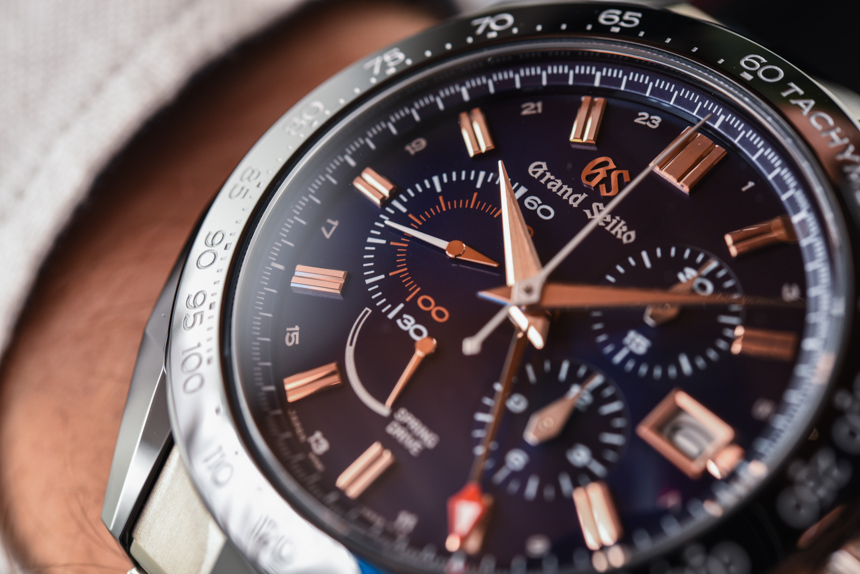
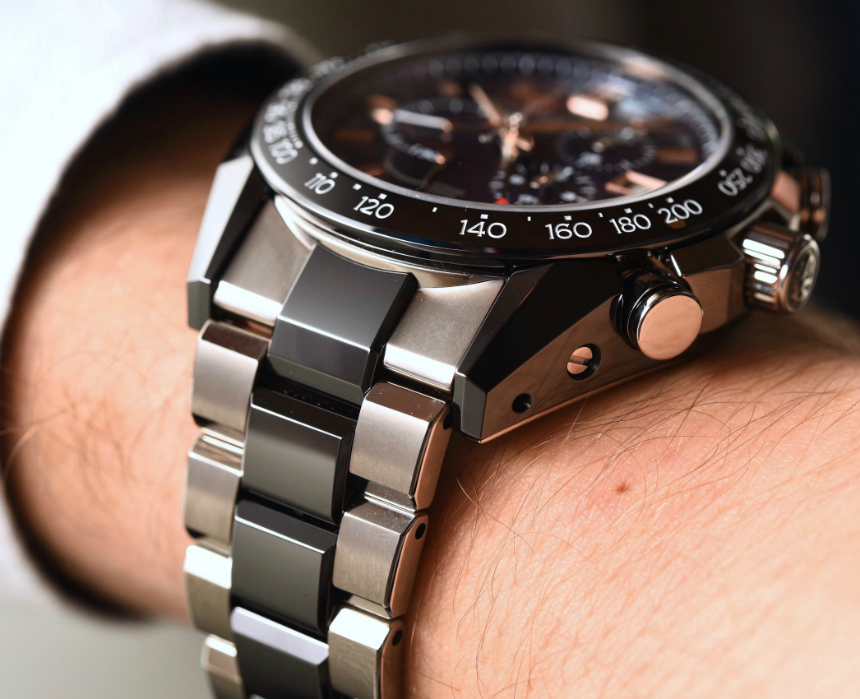
The fact that the power reserve indicator partially obstructed the Grand Seiko logo on last year’s Black Ceramic models really bothered me and I’m so happy to see the newly done dials. I’m glad the slow and steady refinement of their products is always in the front of the minds at Grand Seiko. This reminds me of the “Rolex way” of continuous refinement, such as when they fixed the issue of the far too-short minutes hand on their Explorer with an amended version in 2016.
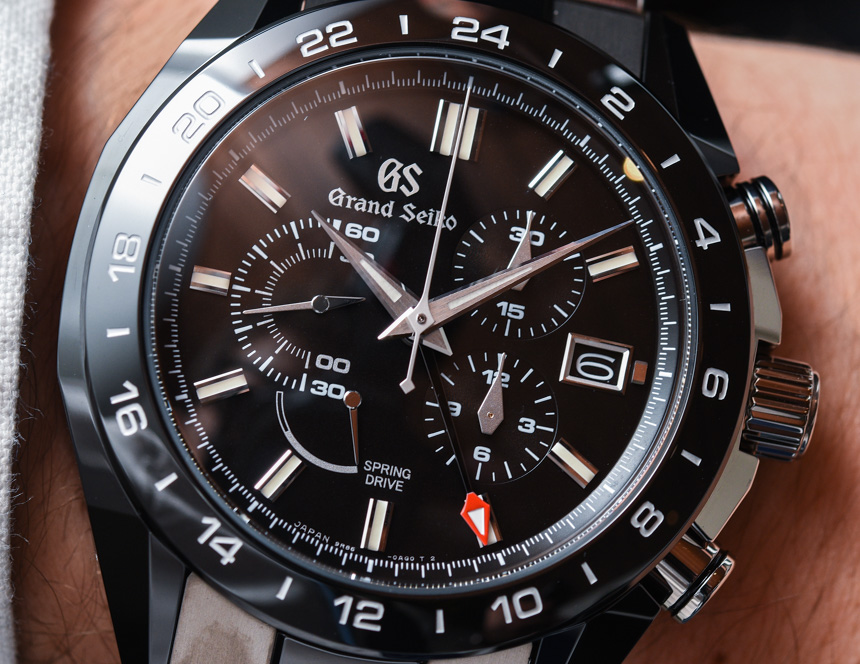
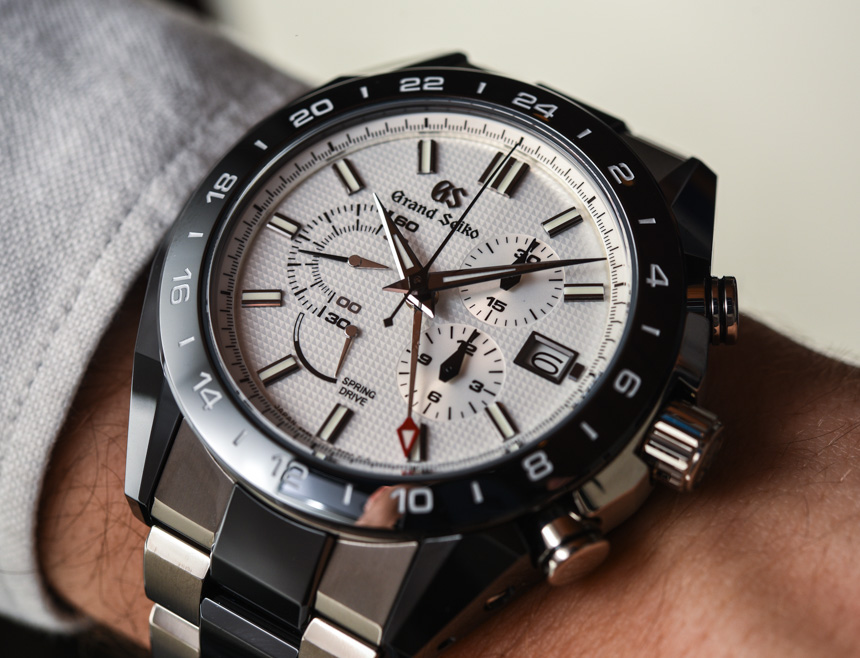
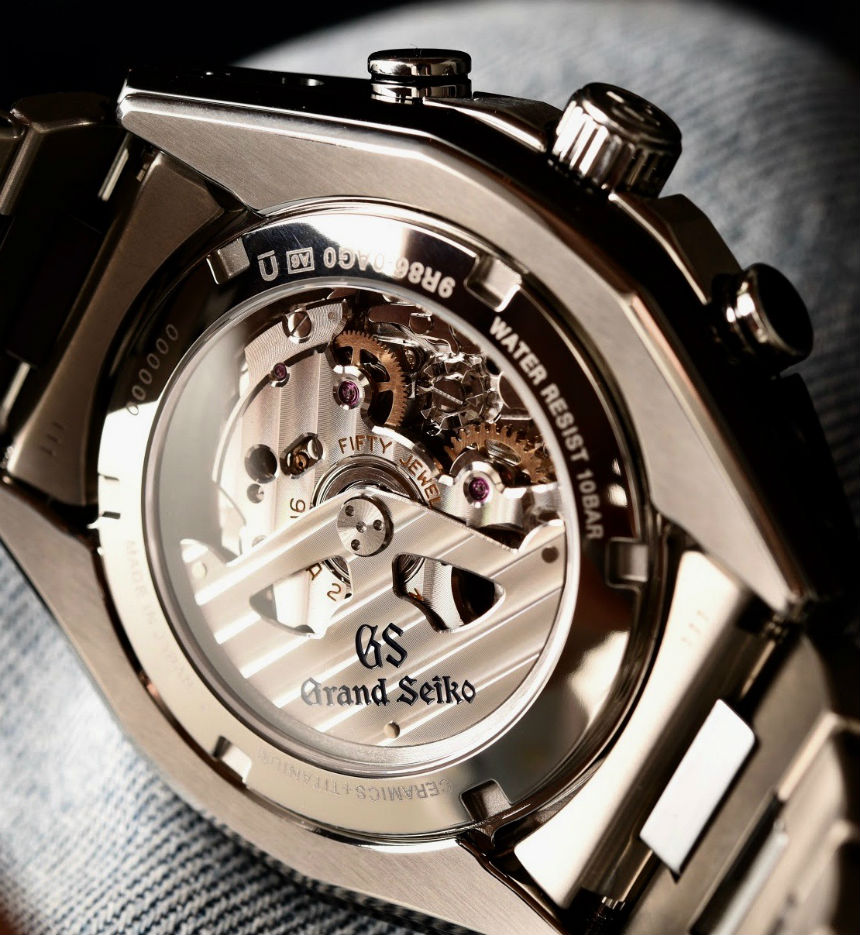
You’ll notice some differences between the limited edition version and the other two, so I’ll explain those here. The non-limited edition SBGC221 (white dial with the very attractive Clous de Paris pattern) and SBGC223 (black dial) have a 24-hour scale on the bezel and have the Caliber 9R86 Spring Drive movement. This movement has a 72-hour power reserve and is accurate to ±1 seconds per day, or ±15 seconds per month.

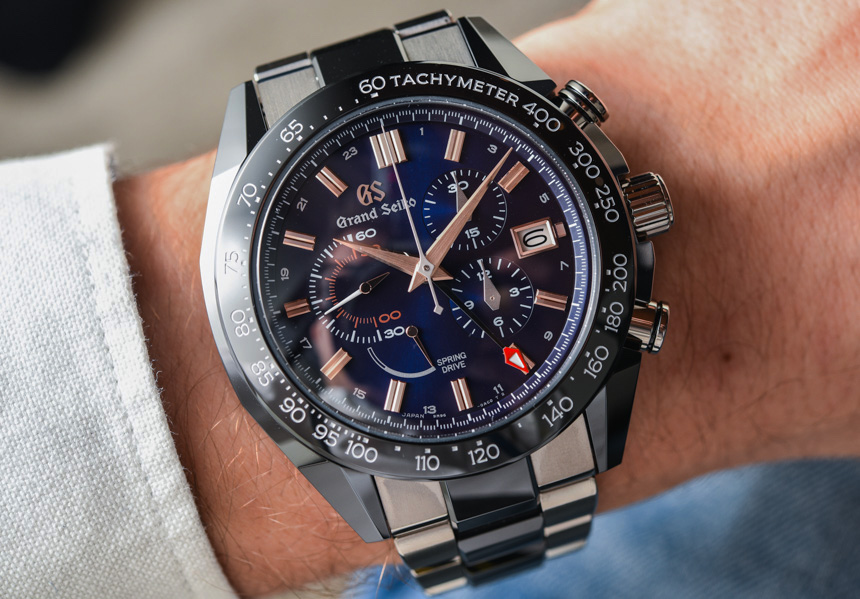
The SBGC219 is a limited edition run of 500 pieces, designed to celebrate the 10-year anniversary of the Spring Drive Chronograph GMT movement. This model has some differences, starting with the fact that the bezel features a tachymeter scale. I suppose this is a way to differentiate the limited edition from the other versions but I personally would never opt for a tachymeter scale and find them particularly vestigial as well as quite unattractive. That’s just me, though.
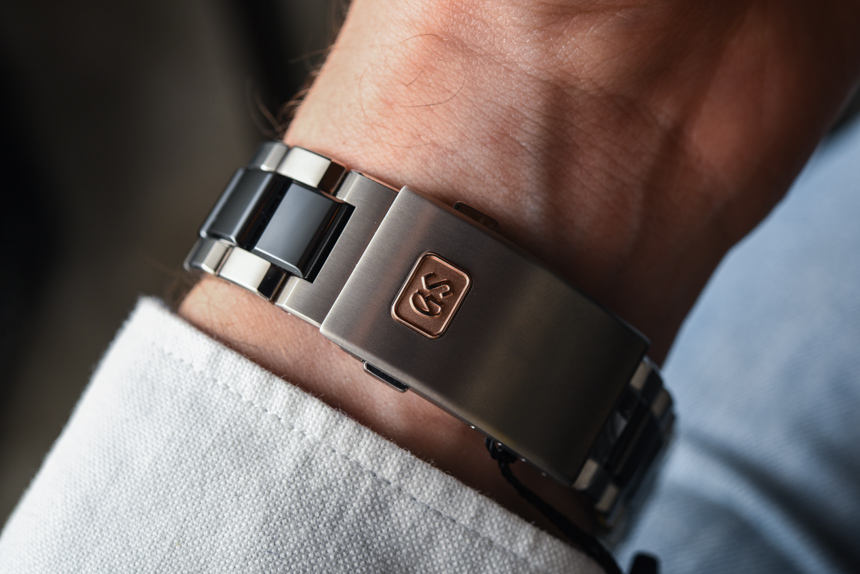
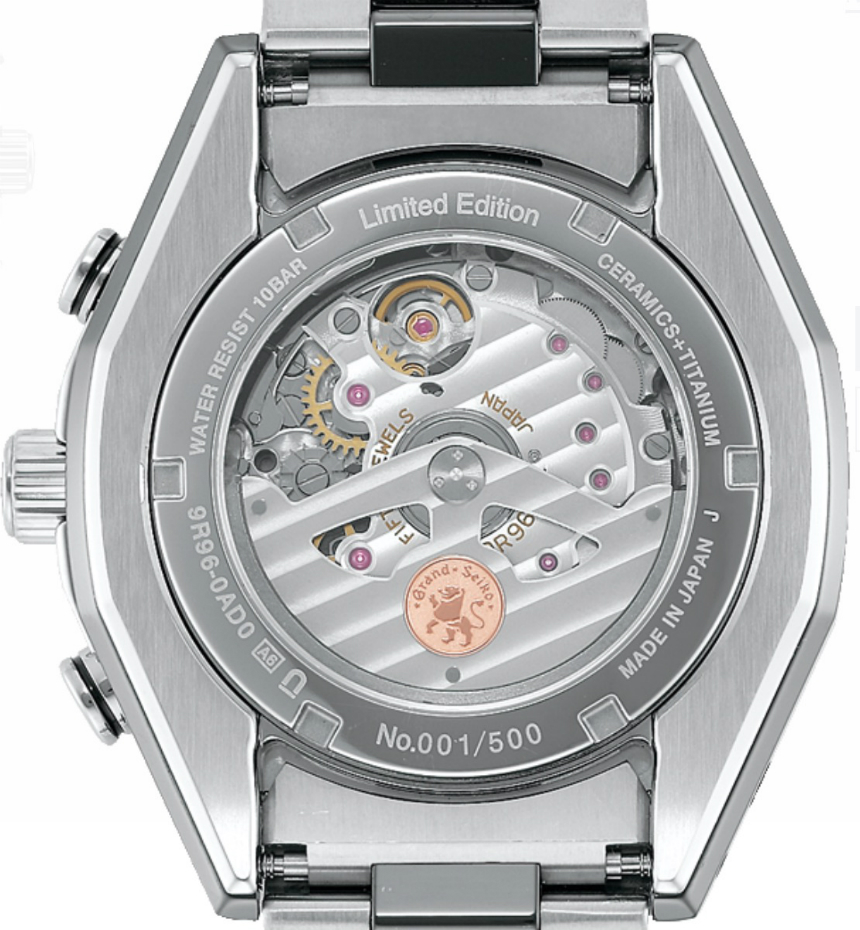
Other distinguishing factors for the limited edition model are a blue dial color, rose gold hands and markers, an 18k rose gold Grand Seiko lion on the oscillating weight (sorry we had to use a press image of this), and an 18k rose gold Grand Seiko logo on the buckle. The movement is also different, with the 9R96 “specially adjusted” movement, which has an accuracy of ±0.5 seconds per day or ±10 seconds per month.
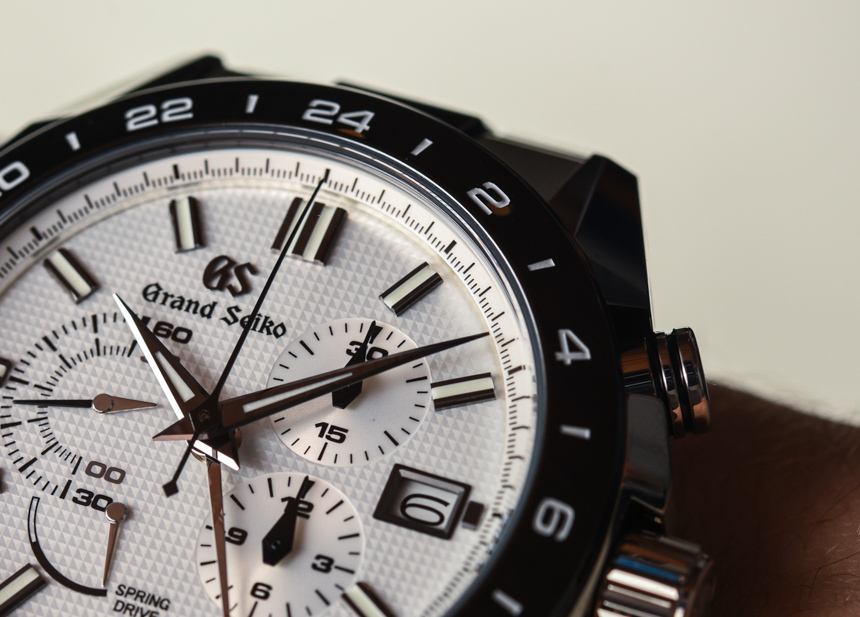
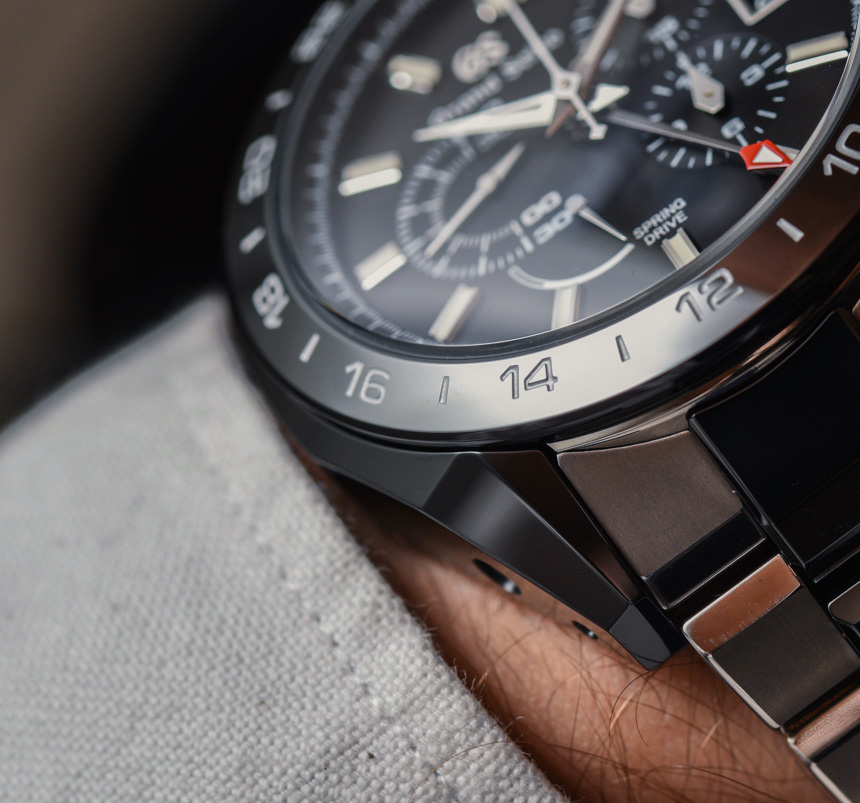
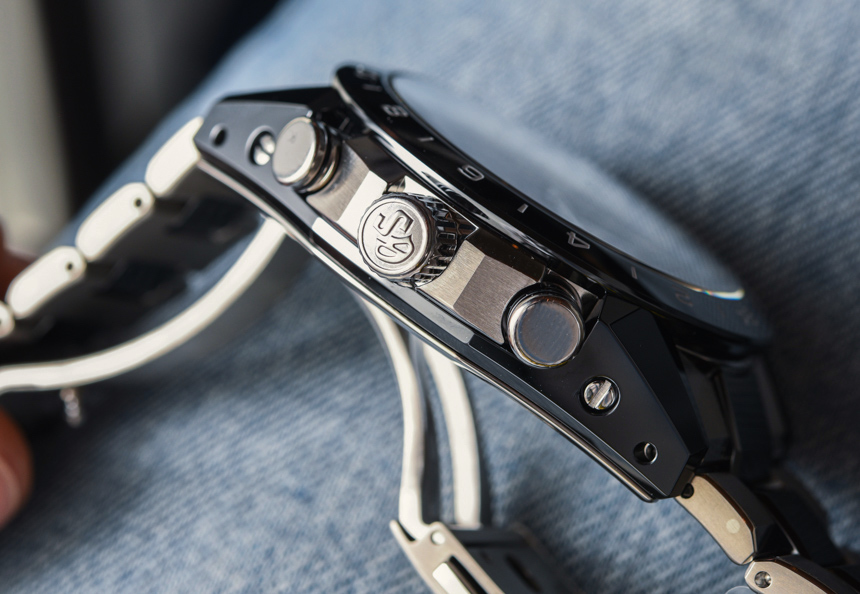
The luxury sports watch field is fiercely competitive and packed with some of the most popular watches from some of the most well-known brands. The Omega Speedmaster Co-Axial Chronograph Dark Side of The Moon Black Ceramic ($12,000), Omega Seamaster Planet Ocean GMT Deep Black ($11,700), Rolex Daytona ($12,400), and Hublot Big Bang 44 ($13,600) are all less expensive than any of the three Grand Seiko Black Ceramic Chronograph watches I discussed here. That’s some stiff competition, even when you consider the fact that the buyer of these high-end Grand Seikos will typically be looking for something not as common as the “competitors” I just mentioned. Perhaps another (very charitable) way to look at it is that the Grand Seikos are significantly less expensive than the chronograph steel offerings like the Patek Philippe Nautilus, the Audemars Piguet Royal Oak, or Vacheron Constantin Overseas watches, all of which are well into the mid to high $20,000 mark. That is a very ambitious analysis, to be honest.
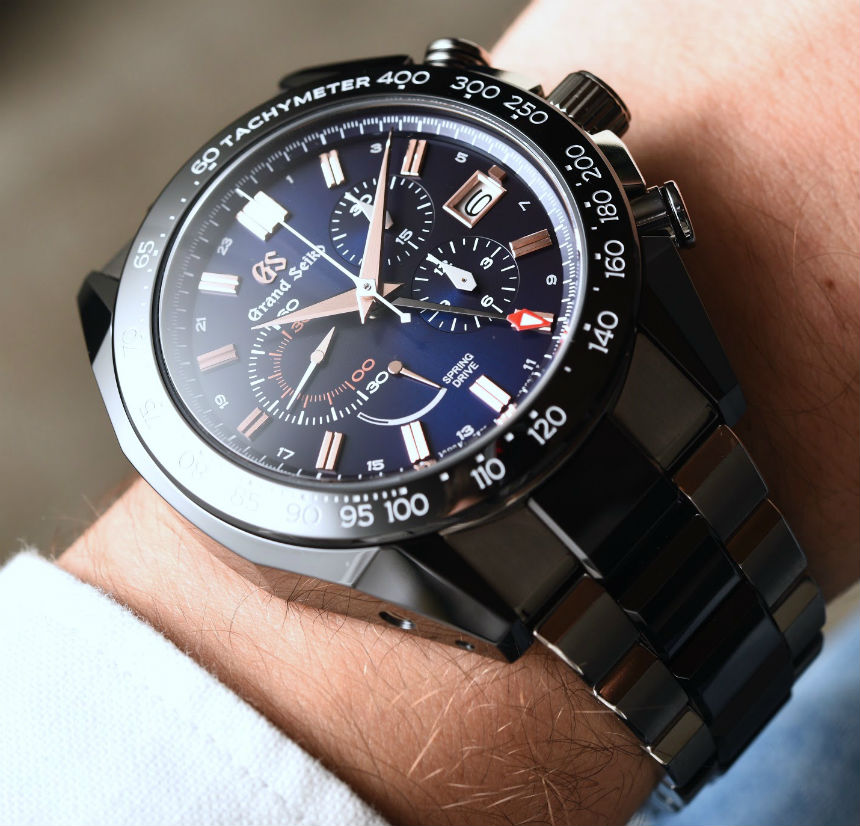
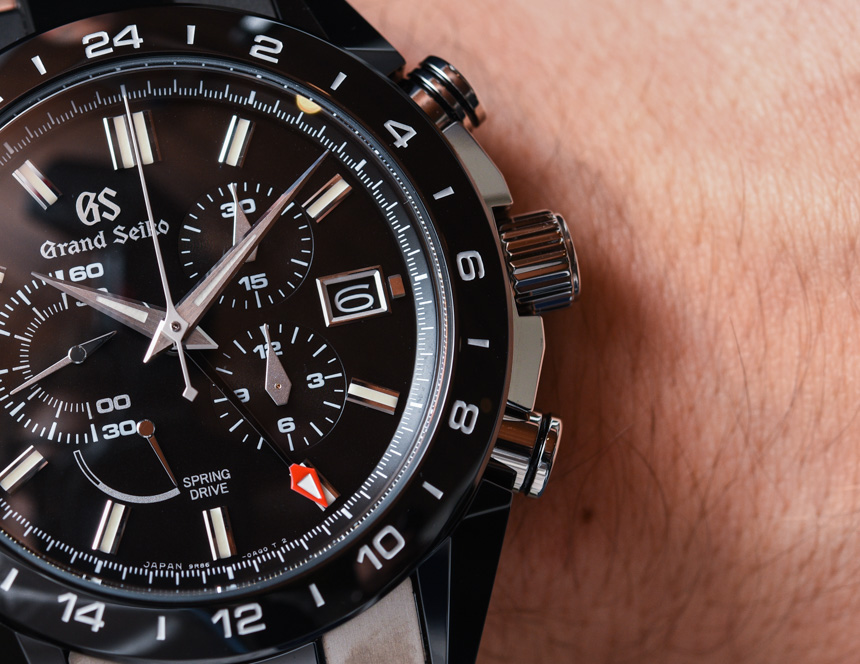
Part of the difficulty is pinpointing exactly where the “new” Grand Seiko (without the Seiko) offerings like these Black Ceramic sports watches will land, not just in sales but how well prices on the grey and second-hand market hold up. The product quality, finishing, and movement are there but the “X-factor” of brand positioning in the already crowded non-Japanese market they are targeting is going to be tough for Grand Seiko. That being said, with offerings like their SBGD001 Spring Drive 8-Day Power Reserve watch, we know Grand Seiko can’t be faulted for a lack of trying, let alone their success in concept and execution of high-end timepieces.
Once again, pricing for the Grand Seiko Black Ceramic SBGC221 and SBGC223 is $14,800 and the limited edition SBGC219 is priced at $15,800 with a run of 500 pieces. grand-seiko.com

